Content Creation is Getting Better Because of the Pandemic

Well…it’s about time!
For what?
Have you seen the list of big Hollywood film projects that have started back up, again … finally?
Ooppss…put on hold again!
Good thing most of the smart folks chose work locations that cared about the work and workers.
After a lot of Zoom vetting on the part of crew members and actors, Universal finally convinced their crews they were going to do everything possible to keep them safe to restart work on Jurassic World: Dominion.
It’s definitely not your mom’s video story production world anymore. And with the new procedures going into place, it will never be again!
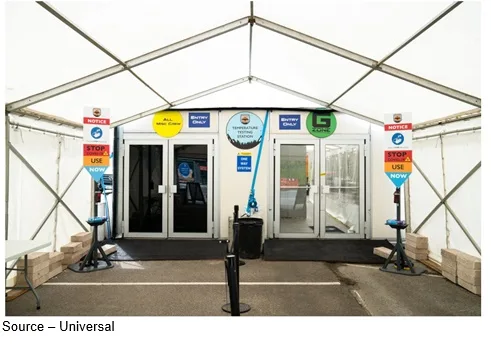
Getting into the Jurassic World Pinewood studio now looks a lot different than entering before the production was shut down in March.
To get the production up and moving and everyone back to work, they fronted an estimated $9M in safety equipment, new health inspectors, processes, procedures.

The 107-page safety manual goes into greater detail than any script ever has and is constantly being reviewed, edited and modified because folks don’t know what they don’t know.
Well, that’s not really true.
People around the globe who have returned to the sets – actors and crew members alike – report that the changes are improvements they would like to see stay in place.
The changes could stick because face it, the industry hasn’t changed all that much in the past 100 years … just more people, more equipment, more technology.
One of the changes that the pandemic accelerated was the use of the cloud in post-production work.

Films, shows are being scripted, shot, edited and delivered year-round, not just in the first six months of the year, so it was logical that hundreds of projects had started to wrap up and leave the sets before the lockdown.
All that was left to do was all of the creative post-production work – edit, FX, audio, color stuff and efforts that bring a film/show to life.
The industry has always been decentralized and was already moving to fully digital production, so this was treated as just another step in providing a newer, better and faster way to efficiently deliver quality content.
Better cameras and sensors provided very high in-camera data rates and allowed very low on-set acquisition. Reusable high-speed media made it fast and easy to simply keep cameras rolling to capture everything … just in case.
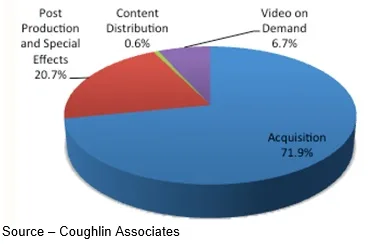
All of that content from beginning to end was the responsibility of the DIT (digital imaging tech) who works with well, just about everyone on the production team to ensure content quality and that the finished work meets everyone’s creative standards.
It doesn’t sound too tough until you realize she/he is responsible for every bit/byte and that digital content builds up quickly when you’re shooting in 4K or 8K UHD (ultra-high def), HFR (high frame rate), WCG (wide color gamut), HDR (high-dynamic-range) and just about every acronym you can think of.
What are we talking about here?
Take a simple example that Cirina Catania, creative director, The Catania Group, drilled into us years ago:
- Original Media exactly as shot
- Protection Clone (never to be touched)
- Worker Copy (files renamed, organized)
- Protection Copy of Worker
- Studio copy of Worker
- 3rd Clone of Worker for safety
- Output of project
- Clone and 2nd Protection
- Archive
Yeah, that’s why we like the M&E industry because it grew up in the storage industry with flash (SSD), HD (hard drives), network storage.
Things you could see.
Of course, you have to multiply those storage devices because post experts don’t all live in the same city and often not even in the same country.

Every director has his/her go-to edit, FX, color, sound, music and animation specialists who live/work “there.” That has previously meant a copy or two of parts of the project were provided to them to work their magic – great for FedEx – and returned.
Sure, there have been those folks who have who extolled the benefits of cloud storage and collaborative workflow and pushed storing everything in the cloud – AWS, IBM, Azure, Google, Rackspace, etc.
Still,70 percent of the media folks interviewed by IBM a year ago still preferred having the stuff where they can see it, touch it, pet it.
But the pandemic made everyone in the industry rethink what they were doing to get projects completed faster, easier, better.
Practically overnight, teams became real interested in storing/working in the cloud despite the gnawing concerns about security, accessibility and transmission bandwidth.
“Moving content to and through the cloud has been a major initiative for the industry in recent years,” said Allan McLennan, chief executive of PADEM Media Group. “And the lockdown placed extra pressure on studios and production teams to make it an integral part of their projects workflow.
“There are still some of issues to be worked out,” he noted, “but teams have been able to keep their work flowing. The combination of video conferencing and sharing screens to make more informed decisions on ‘what if’ and alternative approaches are producing the desired results more efficiently, effectively and securely than the past physical storage exchange approach.”
While original and insurance files are still secured on on-prem physical storage (there are only so many risks intelligent people are willing to take), project teams have been able to finish projects by moving content directly from the camera to the cloud and almost instantly make it available to authorized specialists to work on at their workstations or remotely in the cloud.
The first big obstacle is that there isn’t just one cloud (you were aware of that, right?). There are dozens of service providers around the globe and they each do certain things different (better, according to them); so until cloud interoperability is rock solid, production folks will just have to deal with it.
The same is true of cloud-based work tools, so folks deal.
The biggest challenge production teams have to deal with when they’re moving TBs of creative data around is transmission bandwidth.
Most post work is done with proxy files (low-res copies of the originals) because they’re easier to work with on your local system and “a little easier” to work with in the cloud.
You may have heard that now that we have 5G connectivity everywhere, sending big data files across the country or halfway around the globe is fast, simple and reliable because we’ve now got bandwidth to burn.
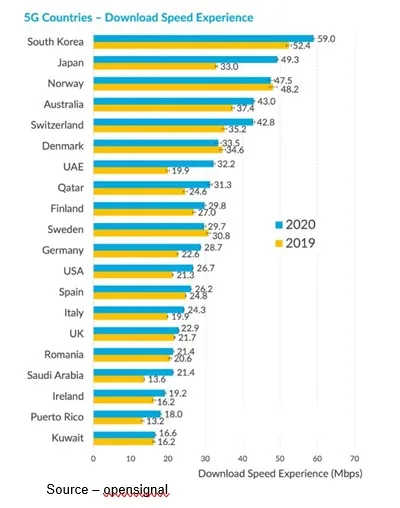
Yeah right!
Most impartial folks say 5G will be decently available by 2025 and fairly globally by 2030.
Until then, 4G LTE connectivity and enhanced workflow/post tools will keep production workflow working.
Upload speed to move content to the cloud is usually half of download speed (when you’re streaming a movie), which is why workflow solutions have been designed to handle things like packet loss, momentary service interruptions and other transmission issues.
We probably should get out of the habit of referring to films and TV shows as Hollywood projects because the best work is being done by the best people around the globe.
Nearly all of the project restarts and new projects were international – London, Toronto, Berlin, Wellington, Sydney, Mumbai, Nairobi, Singapore and well just about everywhere. Work in the US that has been slow out of the gate because … oh heck, you know.
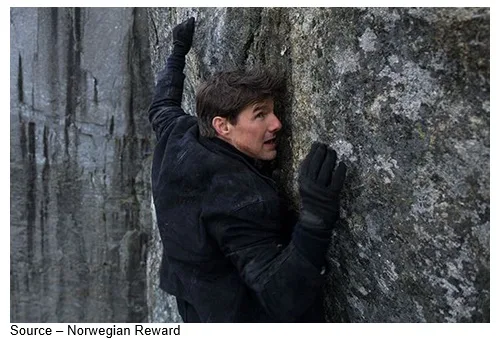
Tom Cruise got MI:7 back online a couple of months ago in London and even found time to sneak into the premiere of Christopher Nolan’s Tenet (complete with his mask and PR folks).
Cruise rented an entire hotel so everyone on the project could “avoid” outside contact.
When he moved the work to Norway, he paid $700K to keep everyone in a “bubble” to reduce the risk of someone getting sick.
Of course, as soon as MI:7 is done, they’ll begin shooting MI:8.
He has to finish that one before he can do his Space X/NASA project, which probably won’t have a thing to do with John Glenn’s historic flight the same year Cruise was born.
Go ahead, look it up … we’ll wait.
They wrapped the production of Top Gun: Maverick before the pandemic lockdown and finished post-production remotely but will hold the release of the film until theater attendance gets healthy – summer 2021.
Heck, even M&E companies that were born in the cloud (Amazon, Netflix) learned how to enhance and improve their production/postproduction workflow.
Netflix has creative facilities around the globe that enable it to produce super content for local viewing as well as for international consumption such as the great run of films they produced in Nairobi and Mumbai.
When projects shut down around the globe, new work stopped–even for the technically adept.
But Netflix and its nemesis Amazon had two important assets:
- They had developed/used a hybrid postproduction operation for editing, color correction, conform activities, special effects and sound/music work so any completed or nearly completed project could be finished online, on time.
- From the outset, they had used AI to guide decision making. Netflix has one of the most complex and guarded algorithms that recommends specific content to its audiences. The pandemic accelerated the urgency of using AI to analyze data to make commissioning, acquisition and post-production decisions so that every (O.K., maybe nearly) film and TV series attracted new viewers and retained existing subscribers.
“A mystique has surrounded video storytelling for years that said success/quality was based on personal experience, creative instinct, charisma and talent, McLennan said.“Computers and data were simply tools that creatives used.
“The pandemic enabled everyone in the production/delivery ecosystem to rethink everything including the use of AI to interpret data about the project, show creatives patterns and analyze segments to maximize the impact and acceptance of the film/show,” he added.
While shooting had stopped, remote post-production continued; and thanks to shooters keeping the cameras rolling, production executives had huge volumes of digitally capture scenes.
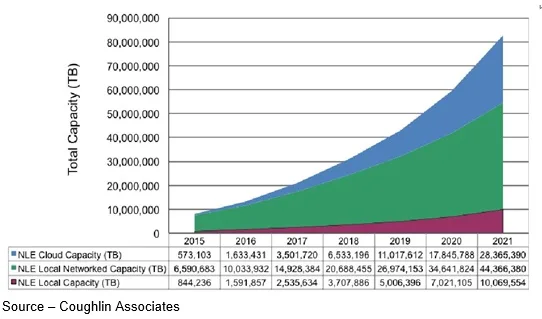
Tom Coughlin, of Coughlin Associates, pointed out that while 4K-formatted content may be the most widely used and distributed material today, studios and producers increasingly capture stories in digital 8K, which requires 13x more storage capacity than 4K to future proof projects.
‘It’s not uncommon for an hour-long project to produce 200 to 500PB of compressed/uncompressed, full resolution multi-camera digital content,” he said. “In addition to the content, you have to add metadata – data about the video and audio content essence – that enables fast, reliable workflow.
“All of the data is valuable and, as the pandemic proved, can be a project saver when reshooting is totally out of the question,” he added.
Tagging thousands of hours of digital content “footage” previously required tens of thousands of staff hours to manually identify shots with keywords, the specific camera used and the location, in addition to identifying anything relative in the scene.
Using AI workflow tools, project teams can access the catalog of used and unused content in minutes and hours versus days and weeks so studios and producers can quickly fill in segment gaps, test alternative scenes and more rapidly finalize the post work to meet delivery deadlines. Funny how even a pandemic can’t be a reason for not delivering new content, shows to homebound folks.
“AI isn’t entirely a magic pill for the content industry,” McLennan emphasized. “The process cannot be instantly installed and used to deliver a finished film or show. Writers, producers, directors, shooters, post-production staff and even financial underwriters and studio executives have to ‘educate’ the technology to enable the teams to help develop/produce/deliver a film or show that successfully meets the genre’s and producer’s vision in order to resonate with the target audience.
“Then, they can offer audiences the entertainment product and let the ultimate intelligence tool decide if it works,” he concluded.
We won’t say the M&E industry has suddenly gotten “religion;” but after months of working from home connected by cloud workflow tools and video conferences, it’s difficult to believe that anyone in the project food chain will want to return to the old normal.
There’s still a lot of work cloud service and workflow tool providers have to do to refine and optimize projects. And with so many projects picking up where they left off, the industry has a chance to effect change and do something they haven’t been able to do in the past 100 years … ensure that the long-term creative industry is alive and well.
After all, as Dan said in Begin Again, “You can tell a lot about a person by what’s on their playlist.”
Still, there are lots of us that sleep better at night knowing we can reach over, pat the box and know our creative work is safe at home.
# # #
Andy Marken – [email protected] – is an author of more than 700 articles on management, marketing, communications, industry trends in media & entertainment, consumer electronics, software and applications. An internationally recognized marketing/communications consultant with a broad range of technical and industry expertise especially in storage, storage management and film/video production fields; he has an extended range of relationships with business, industry trade press, online media and industry analysts/consultants.
